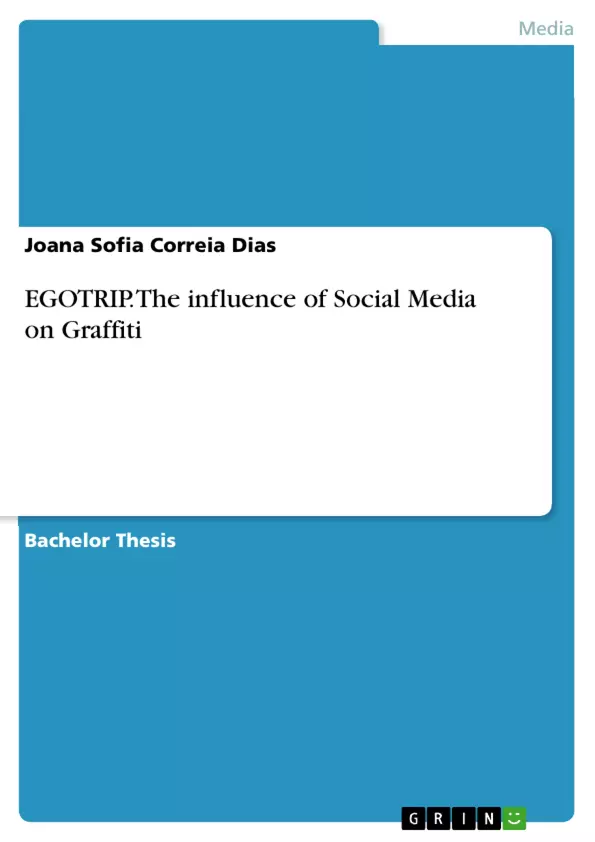What is the influence of social media on graffiti? Through this thesis I try to answer that, basing it on Portuguese train bombing, an illegal form of graffiti performed on trains and subway cars. In order to explore this subject further I have looked at diverse fonts and forms of research, conducting four interviews, reading books about the matters, watching documentaries, exploring social networks and reading different articles.
At first, I explore the history of graffiti on a worldwide context and then in the Portuguese context. The next two chapters explain what has social media given and taken away from graffiti. Ending then in a brief analysis of everything I refer through the main body of this thesis and speculating about the future of graffiti.
Inhaltsverzeichnis (Table of Contents)
- INTRODUCTION
- #GraffitiHistory
- #GraffitiHistoryPortugal
- #TrainBombing
- #VandalsInControl
- Conclusion
- Glossary
- Appendices
- RISKO
- CP-Patrícia Gonçcalves
- Alien and Mig
- PSP
- List of References
- Bibliography
- List of Figures
Zielsetzung und Themenschwerpunkte (Objectives and Key Themes)
This thesis aims to investigate the influence of social media on the graffiti movement, specifically focusing on Portuguese train bombing. The author utilizes diverse research methods, including interviews with graffiti writers and authorities, analysis of social media platforms, and a review of relevant literature.
- The evolution of graffiti throughout history and its relationship with various media forms.
- The impact of social media on graffiti communication, visibility, and access to information.
- The potential downsides of social media for graffiti, such as the loss of originality, increased surveillance, and public perception.
- The relationship between graffiti and street art, and the blurring of boundaries between the two movements.
- The future of graffiti in Portugal and the challenges posed by social media, law enforcement, and public perception.
Zusammenfassung der Kapitel (Chapter Summaries)
- Chapter 1, "Graffiti History," explores the development of graffiti from its early beginnings in the 1960s to its global spread through various media forms. It examines the impact of media attention on the movement's growth and evolution, and then focuses specifically on the history of graffiti in Portugal.
- Chapter 2, "Train Bombing," analyzes the role of social media in connecting graffiti writers and sharing their work. It discusses how social media has expanded communication beyond geographic limitations, allowing writers to access a wider range of styles, techniques, and information. However, it also examines the potential downsides of this increased access, such as the vulgarization of the movement and the loss of secrecy.
- Chapter 3, "Vandals In Control," explores the influence of social media on the perception of graffiti by authorities and the general public. It discusses how the easy access to information on social media has led to increased surveillance and a more negative public perception of graffiti writers. The chapter also examines the relationship between graffiti and street art, and how the popularity of street art has impacted public perception of graffiti.
Schlüsselwörter (Keywords)
The main keywords and focus topics of this thesis include: graffiti, train bombing, social media, communication, visibility, originality, street art, surveillance, public perception, and the future of graffiti.
- Citation du texte
- Joana Sofia Correia Dias (Auteur), 2016, EGOTRIP. The influence of Social Media on Graffiti, Munich, GRIN Verlag, https://www.grin.com/document/424912



